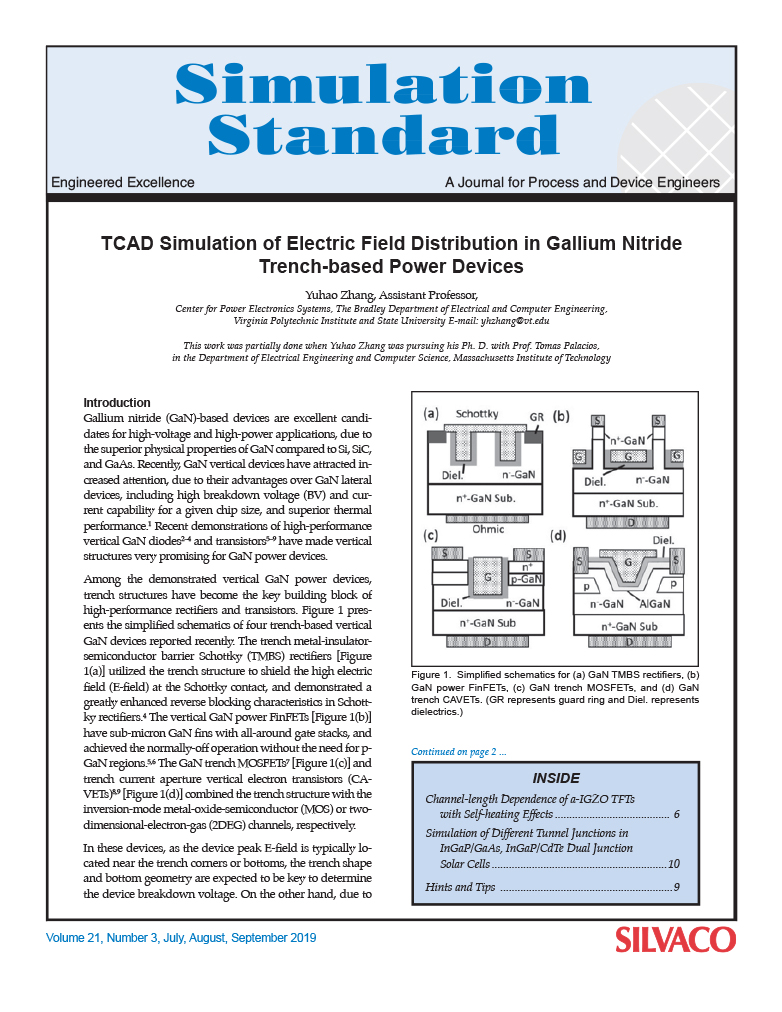TCAD Simulation of Electric Field Distribution in Gallium Nitride Trench-based Power Devices
Yuhao Zhang, Assistant Professor,
Center for Power Electronics Systems, The Bradley Department of Electrical and Computer Engineering,
Virginia Polytechnic Institute and State University E-mail: yhzhang@vt.edu
This work was partially done when Yuhao Zhang was pursuing his Ph. D. with Prof. Tomas Palacios,
in the Department of Electrical Engineering and Computer Science, Massachusetts Institute of Technology
Introduction
Gallium nitride (GaN)-based devices are excellent candidates for high-voltage and high-power applications, due to the superior physical properties of GaN compared to Si, SiC, and GaAs. Recently, GaN vertical devices have attracted increased attention, due to their advantages over GaN lateral devices, including high breakdown voltage (BV) and current capability for a given chip size, and superior thermal performance.1 Recent demonstrations of high-performance vertical GaN diodes2–4 and transistors5–9 have made vertical structures very promising for GaN power devices.
Among the demonstrated vertical GaN power devices, trench structures have become the key building block of high-performance rectifiers and transistors. Figure 1 presents the simplified schematics of four trench-based vertical GaN devices reported recently. The trench metal-insulator-semiconductor barrier Schottky (TMBS) rectifiers [Figure 1(a)] utilized the trench structure to shield the high electric field (E-field) at the Schottky contact, and demonstrated a greatly enhanced reverse blocking characteristics in Schottky rectifiers.4 The vertical GaN power FinFETs [Figure 1(b)] have sub-micron GaN fins with all-around gate stacks, and achieved the normally-off operation without the need for p-GaN regions.5,6 The GaN trench MOSFETs7 [Figure 1(c)] and trench current aperture vertical electron transistors (CAVETs)8,9 [Figure 1(d)] combined the trench structure with the inversion-mode metal-oxide-semiconductor (MOS) or two-dimensional-electron-gas (2DEG) channels, respectively.



